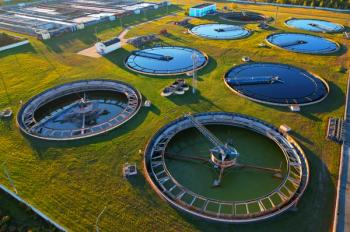
E-Separation Solutions
- E-Separation Solutions-01-29-2013
- Volume 0
- Issue 0
USP Adds 800 New Records to Food Fraud Database
The United States Pharmacopeial Convention (USP) has added nearly 800 new records, mostly from 2011 and 2012, to its Food Fraud Database, increasing the size of the database by 60%. The original database contained 1,300 records, covering fraud reports issued between 1980 and 2010. The database compiles data taken from publicly available reports in both scholarly journals and general media, with key findings published in the Journal of Food Science.
The United States Pharmacopeial Convention (USP) has added nearly 800 new records, mostly from 2011 and 2012, to its Food Fraud Database, increasing the size of the database by 60%. The original database contained 1,300 records, covering fraud reports issued between 1980 and 2010. The database compiles data taken from publicly available reports in both scholarly journals and general media, with key findings published in the Journal of Food Science (1).
“Food fraud” is broadly defined to include the misrepresentation of a product to a consumer, for the purposes of economic gain. Three categories were created in the database to classify the replacement, addition, or removal of substances from products. Most entries (95%) in the database refer to cases of replacement, such as the substitution of part or all of an olive oil ingredient with hazel nut oil.
The main defense against food adulteration is obviously analytical detection methods in quality control. The Food Fraud database shows that the analytical techniques most commonly used in food safety testing are high performance liquid chromatography and infrared spectroscopy, followed by gas chromatography, isotope ratio mass spectroscopy, and hyphenated mass spectroscopy.
However, although technologies have advanced over time, the limited capacity for quality control analytical testing combined with the continually growing list of adulterants means that food fraud is difficult to combat.
Analysts are also limited to one of two strategies. The first is to test for specific adulterants. This approach is sensitive to specific adulterants at low concentration levels, but is limited in its range of analytes detected. The second strategy is to take a brief but comprehensive approach, detecting a range of known and unknown adulterants. This approach limits detection to adulterants at high levels relative to the genuine product, and so has to occur as near to the source as possible. As a product progresses down the supply chain, the foreign substitute becomes diluted and harder to detect if its identify is unknown or unsuspected.
Also, when analysis identifies adulteration in an early stage of the supply chain, the volume of food that has to be discarded is greatly reduced. This supports an argument for the analysis of foodstuffs throughout the food supply chain. But, as mentioned, resources and laboratory capacities are limited.
The top ingredients most commonly reported in food fraud, according to the report, include: olive oil, milk, saffron, honey, and coffee; followed by tea, fish, clouding agents, and black pepper.
The melamine incidents of 2007 and 2008 were covered extensively in the media, but this type of adulteration is still a problem. Melamine is an organic base compound rich in nitrogen, widely used in plastics and adhesives, but it can also be used to alter the results of tests used to check the protein content of milk products (2).
In China, where the milk adulteration occurred, water was added to raw milk to increase its volume. As a result of the dilution, the milk had a lower protein concentration. Adding melamine increased the nitrogen content of the milk and its apparent protein content measurement, which falsely increased the final price of the milk (2).
As the world food market has become increasingly globalized, risks in any part of the world can affect consumers far from the source of the problem. The US seafood market is worth $80 billion, according to the USP, with 80% contributed by imports. One particular series of cases documented within the database include the sale of the fish escolar, by mislabelling it as other fish species. Escolar is banned in Italy and Japan because of the high content of waxy esters that are documented to induce gempylid fish poisoning.
“The idea behind the database was to shed some light on this largely uncharacterized space by collecting and analyzing the fragmented information in the public domain reported by scholars, regulators and media,” Said Jeffrey Moore, a senior scientific liaison for USP who is the database’s creator and lead analyst.
“Ultimately, we hope the database can be used as a tool by food manufacturers, regulators, scientists and others worldwide to help achieve a safer food supply—whether by providing more complete knowledge of known and potential threats, spurring new research and development of more accurate detection methods for potential adulterants, increasing awareness on the part of consumers, lawmakers and others, or by any other means that makes it more difficult on a practical level for parties to engage in this unscrupulous and harmful activity—which is both a public health and business threat.”
The USP are currently inviting outside additions to the database, available at
References:
1. J. C. Moore, J. Spink, and M. Lipp, J. of Food Science, 77(4) R118-26 (2012).
2. Furasawa and Tsumatani, LCGC Europe,25(6) 2012.
Related content:
Articles in this issue
almost 13 years ago
Food Fraud Cases Jump 60% in Two Yearsalmost 13 years ago
The Origins of Cheesealmost 13 years ago
Red Wine Reduces Heart Disease?Newsletter
Join the global community of analytical scientists who trust LCGC for insights on the latest techniques, trends, and expert solutions in chromatography.





